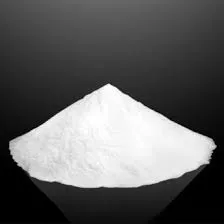
oct. . 17, 2024 08:40 Back to list
Understanding the Benefits of Redispersible Polymer Powder in Construction and Coatings
Understanding Redispersible Polymer Powders Applications and Benefits
Redispersible polymer powders (RDPs) are a significant innovation in the field of construction chemicals and polymer chemistry. These products are traditionally used as additives in various building materials, providing enhanced performance characteristics. When dry, RDPs are free-flowing powders that, upon contact with water, can be redispersed to form a stable polymer film. This unique property makes them invaluable for a variety of applications.
Composition and Characteristics
RDPs are typically made from synthetic polymers, such as styrene-acrylic, vinyl acetate-ethylene, or other copolymers. The production process involves emulsifying the polymer in water and then drying it to create a powder form. A critical characteristic of RDPs is their ability to revert back to emulsion once mixed with water, allowing for seamless integration into construction materials.
These powders improve adhesion, flexibility, and resistance to weathering and chemicals. Notably, RDPs enhance the workability of cement-based materials, which can often become rigid and difficult to apply. By incorporating RDPs, formulators can produce materials that provide better application properties and long-lasting durability.
Applications in Construction
RDPs find their primary use in various construction applications, including
1. Tile Adhesives RDPs enhance adhesion properties, allowing tiles to adhere effectively to a range of substrates, including concrete and drywall. The improved flexibility and waterproofing benefits provided by RDPs are critical, especially in wet areas like bathrooms and kitchens.
2. Render Mortars In facade applications, RDPs help to improve the crack resistance and workability of render mortars. They ensure that the render adheres better to surfaces while maintaining its elasticity, which is vital to accommodate structural movements.
3. Self-Leveling Compounds The incorporation of RDPs into self-leveling mixtures enhances fluidity and ensures an even finish. This property is essential for creating smooth floors that are visually appealing and suitable for various applications.
redispersible polymer powder

4. Cementitious Repair Mortars In repair applications, RDPs provide better adhesion and flexibility to repair mortars, allowing them to bond effectively with existing structures. This is particularly important for restoring old buildings where the substrate may have weathered.
5. Plaster and Gypsum Products RDPs improve the mechanical properties of plasters, aiding in workability and finish. Their inclusion in gypsum compounds enhances the final product's performance, making them more resilient to cracking and wear.
Benefits of Using RDPs
The benefits associated with using redispersible polymer powders are manifold
- Improved Adhesion and Flexibility RDPs significantly enhance the adhesion strength of various mixtures, ensuring that materials remain bonded over time. Flexibility provided by these powders allows materials to withstand thermal expansion and contraction.
- Water Resistance The water-resistant properties of RDPs make them ideal for applications exposed to moisture, such as exterior walls and wet areas, thus extending the lifespan of the construction elements.
- Enhanced Durability Incorporating RDPs can lead to increased durability of building materials, providing resistance to cracking and environmental stress.
- Formulation Versatility The variety of RDPs available allows formulators to tailor properties to specific application needs, making them suitable for diverse construction challenges.
Conclusion
Redispersible polymer powders represent a versatile, effective solution for enhancing the properties of construction materials. Their ability to improve adhesion, flexibility, and durability makes them an essential component in modern construction practices. As innovation continues within the field, RDPs will likely play an increasingly critical role in creating high-performance, sustainable building materials that meet the demands of contemporary architecture. For builders and formulators alike, understanding the benefits and applications of RDPs can lead to more effective and durable construction solutions.
-
Versatile Hpmc Uses in Different Industries
NewsJun.19,2025
-
Redispersible Powder's Role in Enhancing Durability of Construction Products
NewsJun.19,2025
-
Hydroxyethyl Cellulose Applications Driving Green Industrial Processes
NewsJun.19,2025
-
Exploring Different Redispersible Polymer Powder
NewsJun.19,2025
-
Choosing the Right Mortar Bonding Agent
NewsJun.19,2025
-
Applications and Significance of China Hpmc in Modern Industries
NewsJun.19,2025







